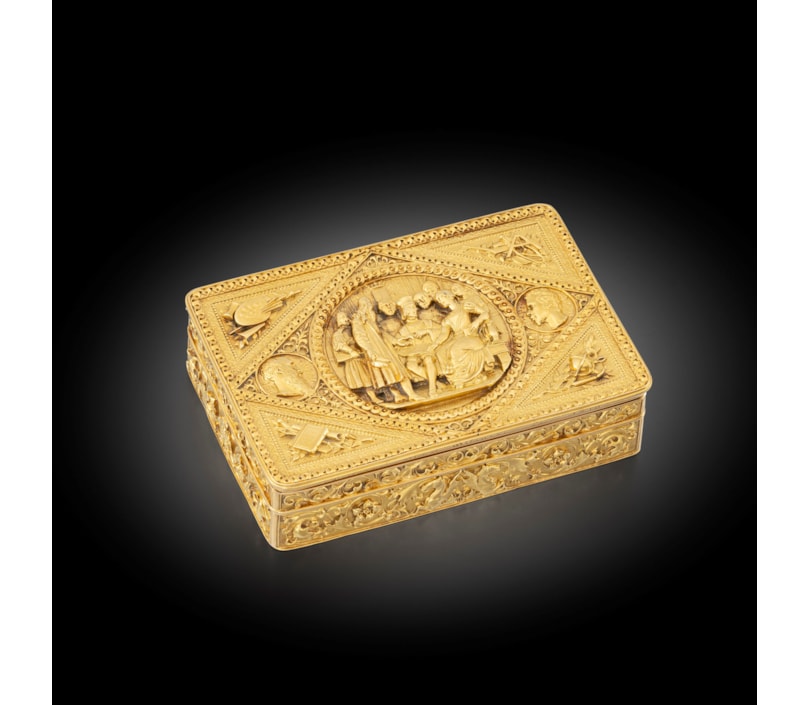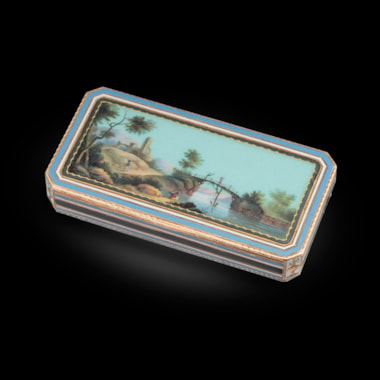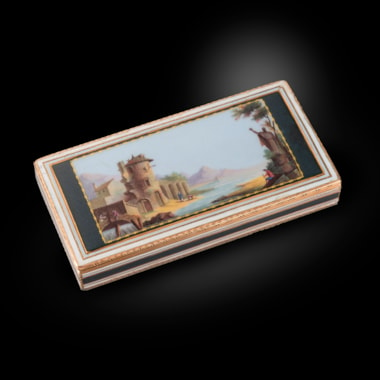The name of the city Milan derives from 'Mediolanum' which was a monster that was seen in the place where Milano was built, and this monster was a pig half covered in wool; Sidonius Apollinare described Milano as follows: Et quae lanigero de sue nomen habet which translates to ‘And that woolly thing has its name’, meaning that the city takes its name from the monster.
The Latin inscription appears on the back of the gold box, enclosed in a medallion that includes the Mediolanum pig.
Gaius Sollius Sidonius Apollinaris (in Latin: Gaius Sollius Sidonius Apollinaris; Lugdunum, 5 November 430 circa - Clermont-Ferrand, 486) was a Gallo-Roman nobleman, a high official of the Roman Empire, poet, epistolographer, bishop of Auvergne and saint.
The decoration which surrounds the shoulder medallion is an intricate version of a grotesque. Grotesques are a particular type of pictorial wall decoration, which has its roots in the Roman painting of the Augustan era, which was rediscovered and popularised starting from the end of the fifteenth century.
The grotesque decoration is characterised by the depiction of hybrid and monstrous beings, chimaeras, often portrayed as slender and whimsical figurines, which blend into geometric and naturalistic decorations, structured symmetrically, against a monochrome background which, in the case of this gold box, is rendered by a background with a steepled matte finish.
You May Also Like








































































